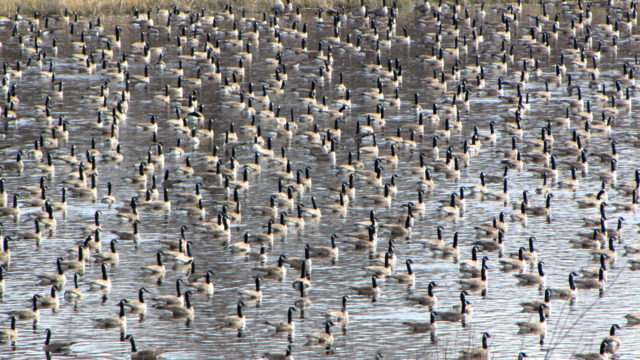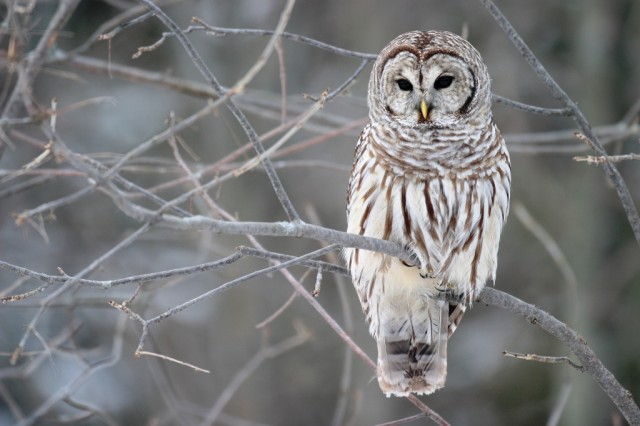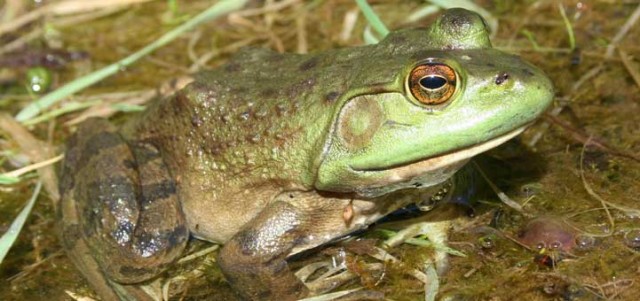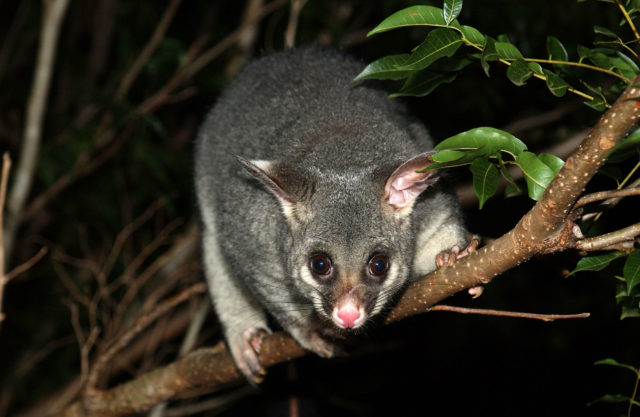While humans trigger most environmental challenges directly, sometimes the threats are posed by animals. You wouldn’t expect these 10 animals to be causing problems, but they are, in their own way, extremely dangerous.
10. Deer Mice, Forest Fragmentation and Lyme Disease
The wide range of human impact on nature includes forest fragmentation, which leaves small clumps of forest behind after logging. While loss of wildlife habitat is a well known result of this, there are further implications that are especially alarming. A series of studies on forest patches indicate that Lyme disease carrying ticks are more abundant in smaller forests. This is due to greatly increased numbers of deer mice, which serve as highly mobile hosts. The mechanism for the mouse population rise was traced to a reduced abundance of competing rodent species such as chipmunks, and an absence of key mouse predators like weasels and hawks. According to one study, human exposure to Lyme disease was found to be five times as likely in forests under five acres.
9. Canada Goose Contamination
Canada Geese are no longer a beloved symbol of the great Northern wilderness. These large, ubiquitous waterbirds are frequently seen in park ponds and city reservoirs, where they may deposit copious amounts of droppings. Clouding of the water and fouling of grass is a commonly noted complaint, but the problem has more serious implications. One goose can deposit over one pound of waste per day, and a wide range of pathogens may be spread by the birds. Disease such as swimmer’s itch may be spread, while E. coli and even chlamydia organisms are potentially transmissible to humans coming into contact with the waste. Even more concerning are discoveries of antibiotic resistant strains. The habit of landing in sewage waste areas near farms may have contributed to this problem.
8. Barred Owl Invasion
An owl is probably the last type of animal you’d consider when asked to name an invasive species. However, one of the most typical looking owls in North America is actually an exotic invader in a significant portion of the continent. Native to the American Southeast, the dark eyed, grey feathered barred owl has rapidly extended its natural range north and west as far as British Columbia in the past 80 years, with the invasion coming to a head in the past decade. The barred owl is native to swamp habitats where it hunts frogs, mice and other small animals. Upon arrival in the Pacific Northwest, with its comparable moist forest habitats, the barred owl places pressure on native species. Endangered spotted owls are believed to be replaced by barred owls in many circumstances, while native screech owls, saw-whet owls and small animals are being taken out in unprecedented numbers by the Southern arrivals. Researchers have pointed to human changes in the landscape as a primary factor in the arrival of this species.
7. African Giant Snail Invasions
Invasions and animal related problems may come at a literal snails’ pace. When a mollusc invasion occurs, the results can be gradual but devastating. Florida is currently experiencing a plague of enormous, eight inch African land snails that cause a surprisingly wide range of problems. Likely released by an irresponsible pet owner, the snails are capable of eating over 500 plant species, will invade yards and parks, and even eats through drywall. The slime and waste is known to cover pavement and walls as the snails take over in large numbers. Other weird problems caused by the enormous snails with large, stalked eyes include flying shards from the shells when the snails are hit by lawnmowers. Teams of cullers and now dogs are being used to track down the snails, according to Florida’s Agricultural Commissioner, who is taking the problem very seriously.
6. American Bullfrog Aggression
The American bullfrog is the largest and most aggressive frog in North America. Native to Eastern North America, the massive frogs may weigh up to one and a half pounds with a length of eight inches! Unfortunately, they’ve been responsible for huge native wildlife losses due to their widespread introduction worldwide through farming and as escaped pets. Even in North America environmental scientists could use “devastation” to describe what’s been unleashed on the Western side of the continent. A study on the southern portion of Vancouver Island found remains of 18,814 animals from 15 taxonomical classes. Prey included crayfish, other frogs, fish, salamanders, lizards, snakes and even birds.
5. The Snow Goose Blizzard
Snow geese may be a symbol of the Northern wilderness, but while beautiful these large, white, arctic breeding waterbirds have increased threefold in numbers since the 1970s, with a correspondingly startling impact. Snow geese dig and graze with their serrated bills, but while this is normally a sustainable activity, reduced predation and increased food availability on wintering grounds in the United States and Canada seem to be driving populations up to unsustainable levels. As a result, large patches of bare mud and destroyed roots are forming moonscapes in the natural habitats frequented by snow geese. The effects cascade down the food chain, affecting grassland rodents, shorebirds, raptors, longspurs, buntings, foxes and waterfowl.
4. The Grey Squirrel Fiasco
Squirrels are among the most familiar and treasured native species in forests. However, a rising problem has become apparent as eastern grey squirrels, native to the east of North America, have become established in British Columbia after eight individuals were released in Vancouver’s Stanley Park in 1914. The squirrels began marching across the province, leaving destroyed songbird nests, ruined vegetation and a range of environmental problems and gnawing issues in their wake. As if that wasn’t enough, the especially sensitive habitats of Vancouver Island were later beset by a northward heading horde of eastern grey squirrels after an escape from a game farm in 1966. The eastern grey has been named one of the 100 worst invasive species worldwide. The squirrels have the ability to displace native squirrels and also spread a deadly pox virus that causes lesions and death in European red squirrels.
3. Invasive Parrots in the United Kingdom
Parrots are the mainstay of tropical scenes, pet stores and vacation advertisements, but the increasingly strange nature of the global invasive species problem might combine green feathers with a cold day. In the United Kingdom, large numbers of Indian ring-necked parakeets are considered a potential threat to native birds as well as being a nuisance and a source of potential damage to crops, native vegetation and suburban environments. The parakeets have the potential to aggressively attack other birds that they wouldn’t encounter in their native habitat, and possibly compete for nest sites. There are approximately 30,000 of the parakeets in the UK at the moment, and one of the most disturbing reports involved a violent attack on native tawny owls in a UK park. Actual clouds of parakeets can be seen in hotspots.
2. The Asian Carp Threat
Massive numbers of Asian carp have flooded drainage basins and tributaries leading to the Great Lakes since their arrival in the 1960s and 1970s. Bighead, silver, black and grass carp collectively may eat up to 20 percent of their body weight each day, draining habitats of native species and ecosystem productivity. The carp displace native species and contribute to habitat disturbance as their numbers swell to incredible levels, where they may make up to 50 percent of the fish biomass in a given environment. Alarm over the possible spread of these fish into the Great Lakes has generated concern, with environmental groups often suggesting that more should be done to prevent their spread.
1. The New Zealand Possum Crisis
Possums may seem like a cute and fuzzy symbol of Australia’s outback or New World forests, but non-native possums are considered a massive threat to the New Zealand environment. The brush-tailed possum, native to Australia, was introduced to New Zealand in 1837 as a new venture in the growing fur trade. However, these marsupials have proven to be a catastrophic addition to the natural environment, killing millions of forest birds and destroying countless nests every year. Targets of possum attacks include the iconic kiwi, which has little defense if a nest site is discovered by possums.
As if their rapacious impact on wild animals wasn’t enough, it has been determined that brush-tailed possums are an important vector for bovine tuberculosis, a deadly threat to New Zealand livestock. The possums now occupy over 90 percent of New Zealand, provoking action plans and control proposals that may potentially cost billions to fully implement, with current control costs reaching 111 million dollars per year. But that’s money worth spending, as current livestock production losses may reach 40 million per year.
Other Articles you Might Like










1 Comment
Giant Snails are invading!!! Stroll for your lives!